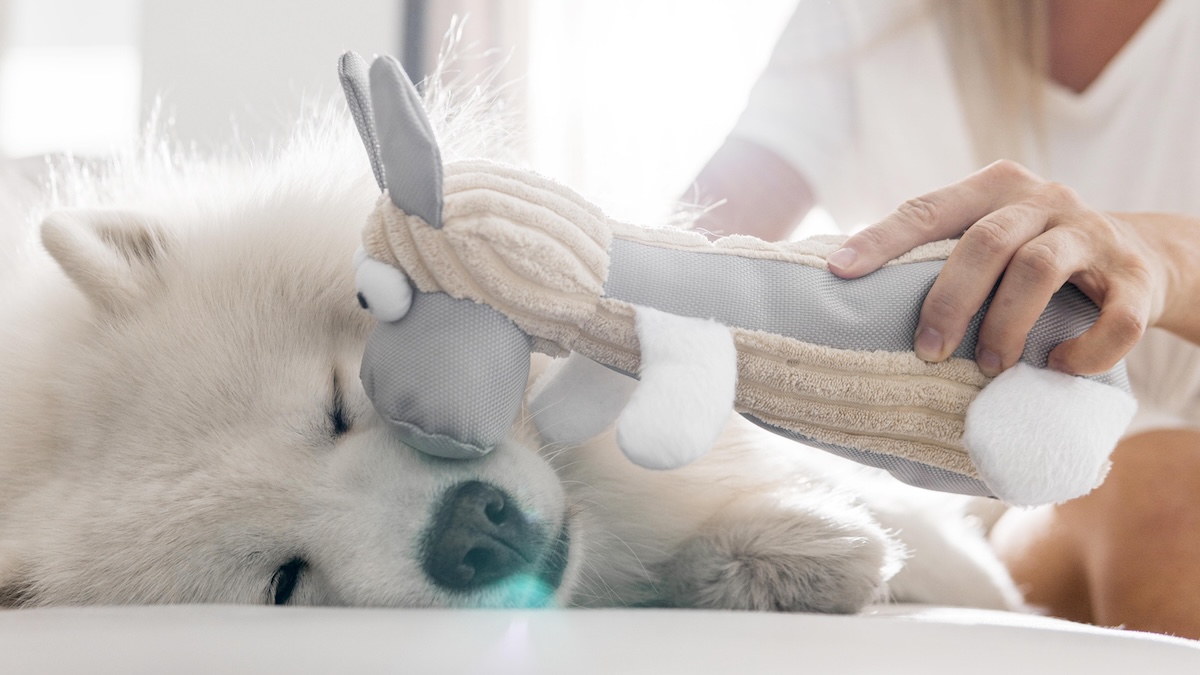For pet owners, a few phrases can make their heart sink, like, “Your dog has a luxating patella.”
Does a luxating patella always mean surgery? Or are there other ways to help our pets live a happy, pain-free life without an operation? Let’s break it down.
What the diagnosis really means
A luxating patella is a common orthopaedic condition, especially among small breeds. That means the kneecap can slip out of place, and for many dog owners, that phrase carries the immediate fear of surgery. But the reality isn’t black and white. What matters most is severity.
Breeds with higher risk include:
Studies have pinpointed several small breeds with notably high rates of patellar luxation:
- Juveniles (2,048 puppies studied)
- Toy Poodles: 38.1%
- Shiba Inus: 34.9%
- Pomeranians: 26.9%
- Yorkshire Terriers: 18.3%
- Chihuahuas: 8.6%
- Adult dogs (210,824 dogs in England)
- Pomeranians: 6.5% (95% CI 3.9–9.2)
- Yorkshire Terriers: 5.4% (95% CI 4.4–6.3)
- Chihuahuas: 4.9% (95% CI 3.8–6.0)
Treatment Approach by Luxating Patella Grade
| Grade | Treatment Approach | Surgery Recommendation | Typical Success Rate | Complication/Relaxation Rate |
| I & II | Conservative management: Weight control, NSAIDs, low-impact exercise, joint supplements, physiotherapy. | Surgery is not usually needed unless persistent lameness or pain appears. | N/A (surgical not typical) | N/A (managed non-surgically) |
| III & IV | Surgical correction: Trochlear deepening, tibial crest transposition, possible bone realignment. | Surgery is generally advised to stabilise the joint and prevent arthritis. | ~90 % in UAE clinics ; Grade IV: 93 % overall | Grade IV: ~24 %–25 % complications; 21 % recurrence |
Week‑by‑Week Recovery Guide (surgical and conservative)
Weeks 1–2
- Surgical cases: Crate rest, brief leash toilet walks (~5–10 min), no stairs or furniture. By day 10, dogs usually bear mild weight.
- Conservative cases: Start gentle range‑of‑motion exercises under vet guidance; NSAIDs and weight control keep joint pressure in check.
Weeks 3–4
- Surgery: Begin short, slow leash walks (3–4 times daily); physiotherapy starts with passive stretches.
- Non‑surgical: Continue rehab, tailored exercise, and joint supplements, brace support may be added.
Weeks 5–6
- Increase activity: Longer walks, sit‑to‑stand drills, muscle‑strengthening. Most small dogs with conservative care return to light routines; surgical wounds usually healed by week 6 for a vet review .
Weeks 7–8
- Dogs regain near‑normal mobility. Introduce stairs and off‑lead play slowly. Final vet evaluation helps assess if further imaging or treatment is needed.
Important Numbers & Facts for UAE Owners
- Surgery success: ~90 per cent in UAE clinics; grade IV surgeries succeed about 93 per cent but carry higher risk for complications.
- In small‑breed dogs, medial luxation is up to 12× more common than in large breeds.
- Conservative care (Grade I/II) often avoids surgery entirely if signs are mild. Rehab at home is shown to be as effective as high‑cost interventions like LASER or electrical stimulation for postoperative recovery.
Bottom line
Surgery isn’t always necessary. If your dog has Grade I or II luxation without persistent lameness or pain, well‑managed conservative care, including weight control, close monitoring and home rehab can work well.
But once there’s consistent limping, difficulty bearing weight, or higher grade luxation (III/IV), surgery is typically the right choice. Recovery, even surgical, takes around 6 to 8 weeks when the timeline is followed, and most dogs return to happy, active life.
For personalised attention and comprehensive post-operative support, consider reaching out to VETCARE Veterinary Medical Centre in Arjan/Dubai Land. We offer after-hours emergency care, a dedicated ICU, full diagnostics (X-ray, ultrasound, lab), emergency and elective surgery, and a team known for guiding pet owners through every stage of recovery with compassion and expertise.
Care, patience and close follow‑up vet care are what matters most.



